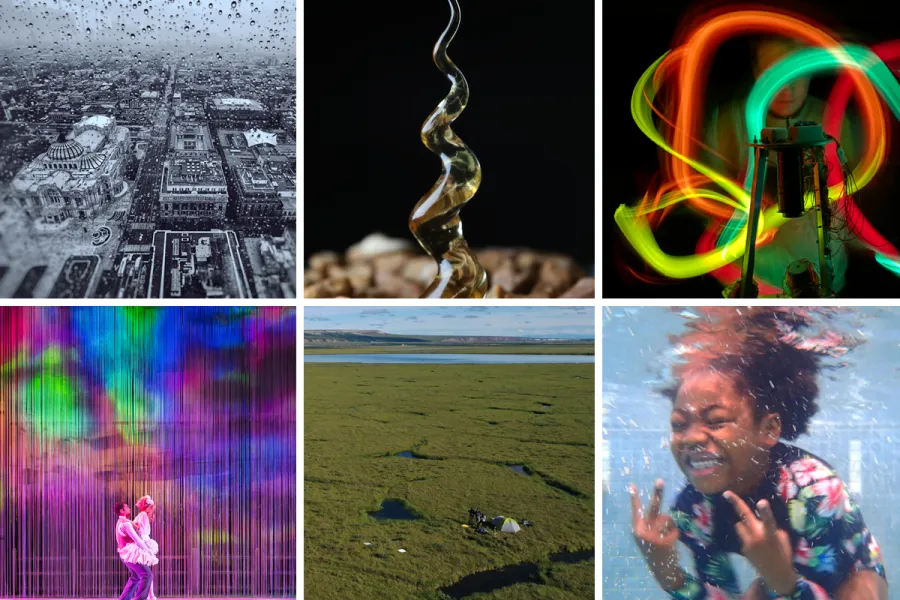The Graduate College and the Media Commons of the University Library are pleased to announce the winners of the 2025 Image of Research competition. This annual competition underscores the extraordinary creativity and intellectual diversity of our graduate students.
Thank you to every graduate student who entered, the semifinalists, and our panel of judges, as well as to visitors of both the online gallery and the on-site exhibit in the Graduate College. Thank you as well to those who voted in the People's Choice competition.
The 2025 Image of Research winners are:
1ST PRIZE ($500 AWARD)
by Ilaria Strocchia from Spanish and Portuguese

Water. Drops that remember, that long for the past. Scattered drops flow and settle fluidly on the windows of the Torre Latinoamericana in Mexico City. From the city’s depths, the modern and imposing building emerges, opening up a view toward a vast and complex megalopolis, where spaces and times crowd together, shrink, and overlap, evoking images of the ancient five lakes that once covered the Mexico Valley. I took this photo in July 2024, during a research trip for my doctoral thesis, which examines the city’s deep relationship with its lacustrine past in Hispanic contemporary literature. Where Mexico City stands today, the Spanish crown began the imperial project of New Spain in the 16th century. As part of it, a centuries-long process of territorial transformation took shape through the systematic draining of the Valley. Though only traces remain of these ancient lakes, torrential rains, devastating floods, and fluid ground continue to swallow up the city while reviving its memory. Water thus remains the region’s vital force, repeatedly returning to reclaim its ancestral space. This ongoing cycle challenges any definitive solution to the centuries-old negotiation between anthropocentrism and nature in the Mexico Valley, as the landscape continues to resist human determinism.
2ND PRIZE ($300 AWARD)
by Yun Seong Kim from Mechanical Science and Engineering

Emerging from the earthy foundation, the twisting helix in this image represents our research journey from potential to realization. Fabricated via ‘growth printing’, a novel additive manufacturing process we developed, the helix mimics the principles of natural growth seen in plants and organisms – where chemical reactions interact with the environment to drive development. Utilizing chemistry that converts liquid resin to solid plastic, we ‘grew’ this helix into its shape using a motion stage. This sprouting helix showcases the potential of merging nature’s wisdom with scientific innovation, opening a doorway to a more sustainable future for manufacturing. For those interested in the technical aspects of materials science: the growth printing is driven by frontal ring-opening metathesis polymerization (FROMP) chemistry, carefully coordinated with printer motion and heat transfer. The self-sustaining exothermic FROMP reaction cures a resin mixture of dicyclopentadiene (DCPD) and polybutadiene (PBD) into a thermoset polymer at a curing at speed approximately 1 mm/s. This process does not require any continuous input of energy to the system to sustain the chemical reaction, making growth printing remarkably energy-efficient and faster compared to conventional additive manufacturing methods.
3RD PRIZE ($200 AWARD)
by Lijia Guo from Plant Biology
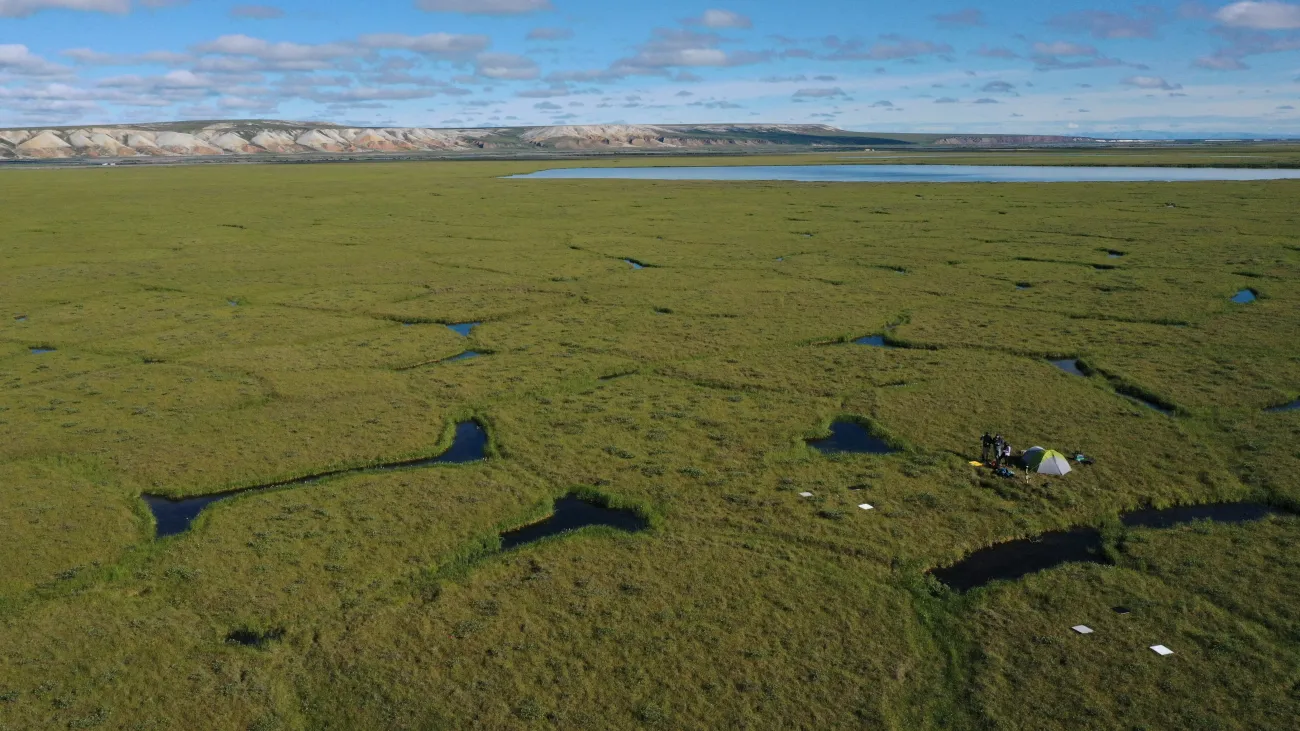
As the world warms, the Arctic feels first, its ancient tundra slowly unraveling. Here, in Alaska’s polygonal landscape, thawing permafrost reshapes the landscape—collapsing paths, shifting waterways, and rewriting the patterns etched by ice over millennia. The photo captures a breathtaking aerial view of Alaska’s polygonal tundra, a fragile and extraordinary landscape sculpted by the processes of permafrost. During the summer, we ventured into this remote and pristine expanse, conducting field sampling and excavating deep into the permafrost to analyze its secrets.Our lone tent, dwarfed by the endless tundra, feels like a metaphor for humanity itself—tiny and fragile against the vastness of nature, yet carrying the weight of its future. The crystal-clear pools mirror the endless sky, as if the Earth gazes skyward, seeking solace. Nature is both exquisitely beautiful and alarmingly fragile, demanding the dedication of generations to preserve and protect it.
HONORABLE MENTION ($100 AWARD)
by Lili Federico from Theatre
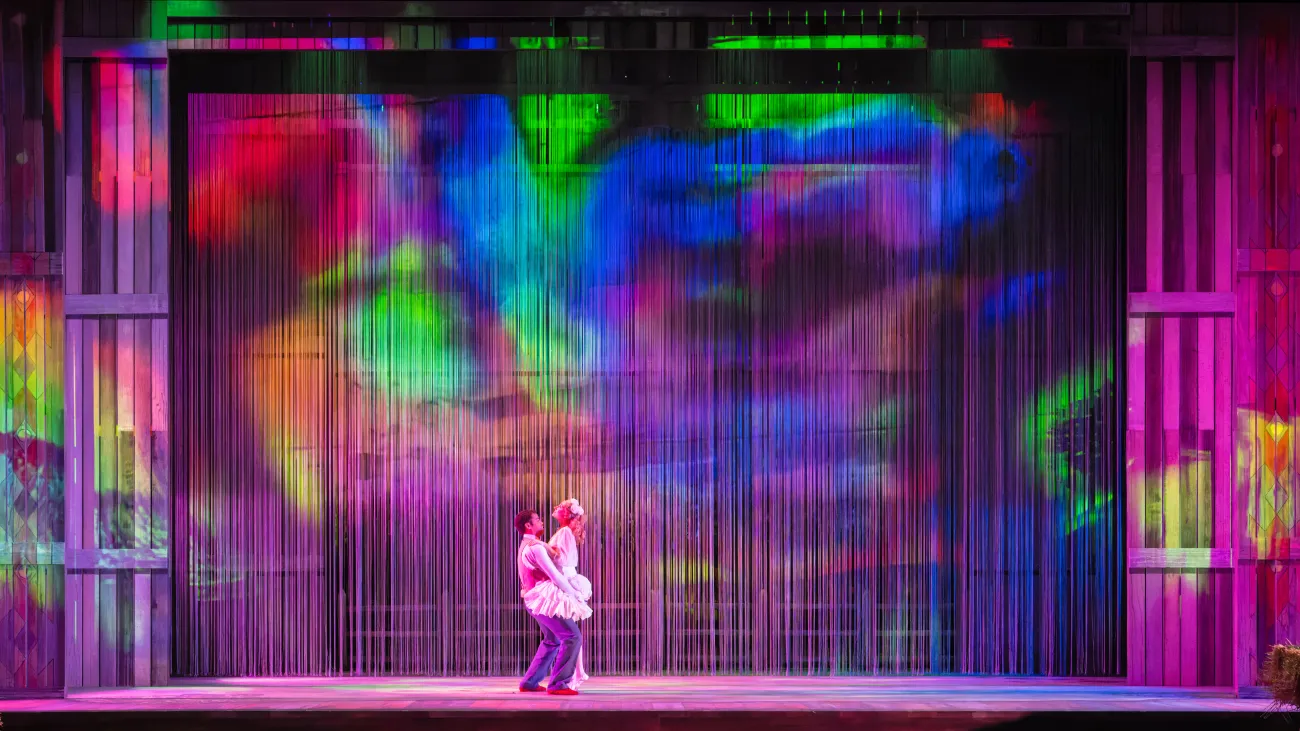
Often, an artist is limited by the tools they have at their disposal. When the artist’s vision becomes greater than the tools at hand, then it is time for discovery. In Lyric Theatre @ Illinois’ production of Oklahoma!, the dream ballet sequence became a canvas for exploring the relationship between technology and live performance. Using TouchDesigner, I developed a system of generative visuals that dynamically adapted to the environment in real time. The software responded to two key inputs: the intensity of the stage lighting and the movements of the performers. These factors influenced the evolving patterns, colors, and textures projected on stage, ensuring that each performance was unique. By relinquishing direct control to the software, I shifted from the role of an artist to that of an architect, designing a framework for the media to interact organically with its surroundings. The result was a vivid, immersive experience, where the media became an active participant in the storytelling. The project not only enhanced the aesthetic of the production but became a base in which to explore, and research, generative art in live theater.
HONORABLE MENTION ($100 AWARD)
by Xavier Davenport from Music
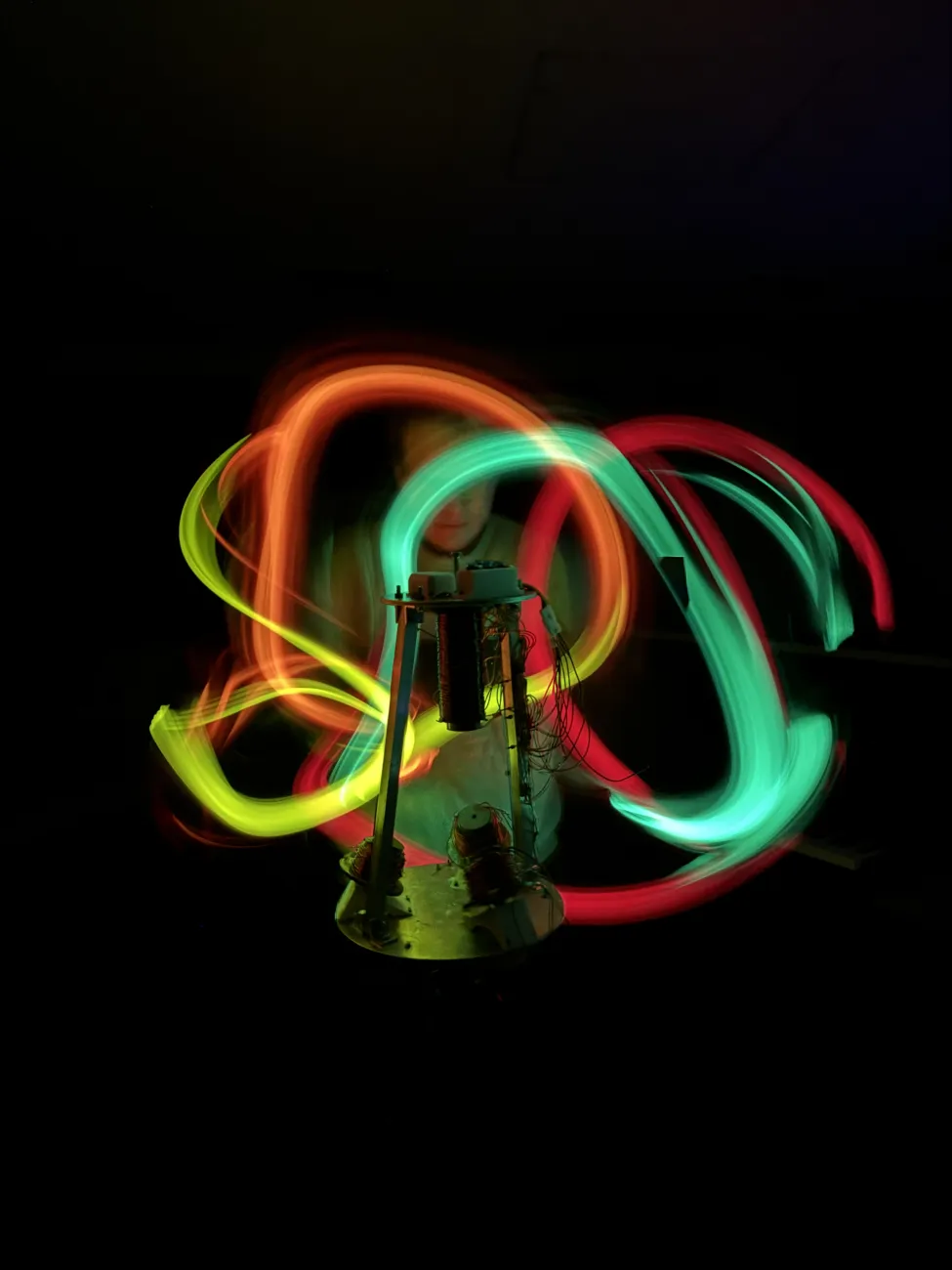
The spinductor is an instrument which allows the performer to hold or wear magnets and gesture in and around the instrument to control sounds. Controllable sound parameters could include things like pitch, rhythm, density, and especially tone color. Rather than being an instrument of precision, the many coupled dimensions of data are fed through a neural network, producing a parameter space that is explorable by altering the magnetic field throughout the instrument. There are also electromagnetic coils on the spinductor which can pulse, providing a sensation of haptic feedback for the performer to push and pull against without needing to touch the instrument! This image is a dramatic depiction of how a player might gesture with magnets around the spinductor and perform with the magnetic field.
PEOPLE'S CHOICE ($100 AWARD)
by Latashia Key from Recreation, Sport and Tourism
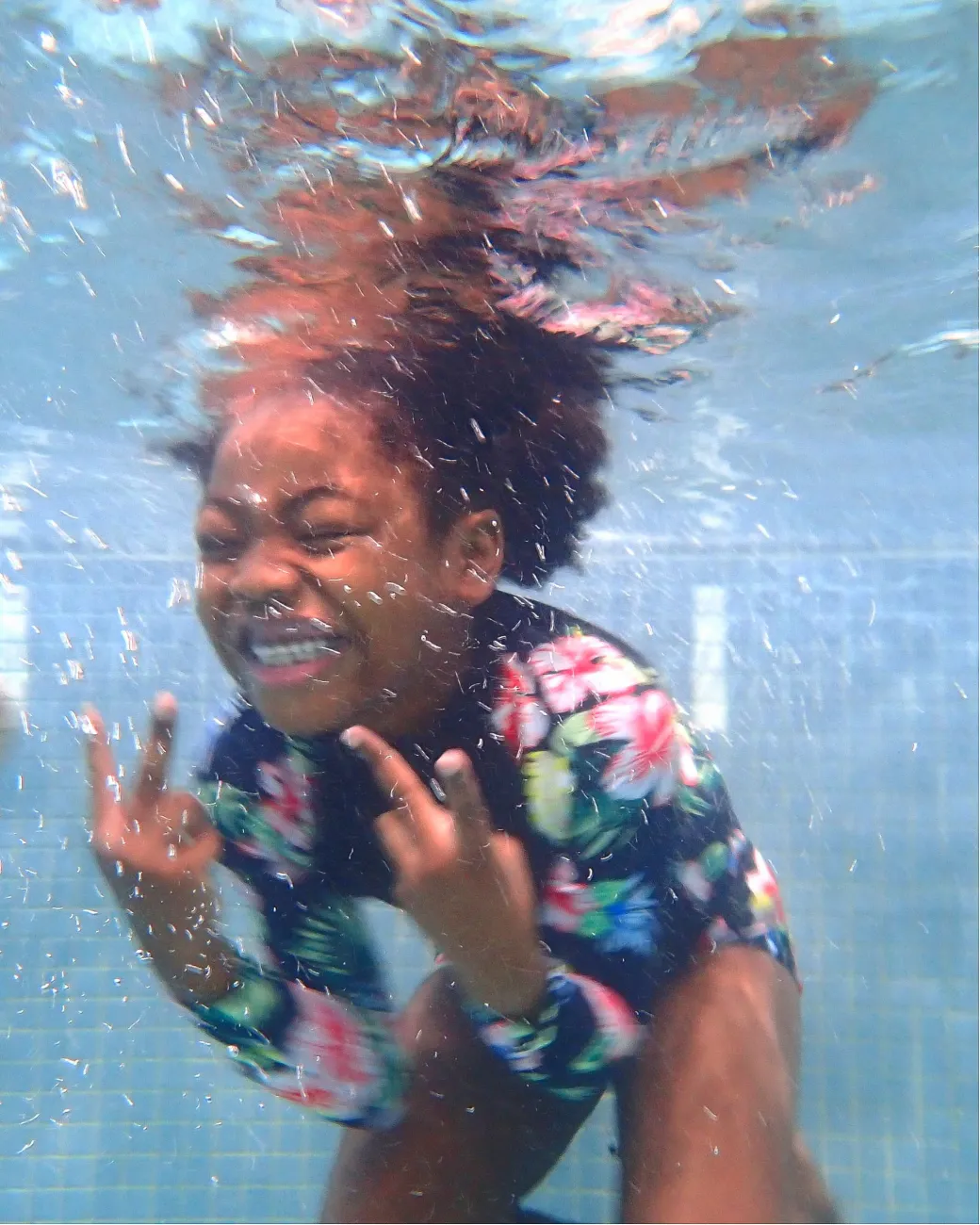
Water is vital to our survival as human beings and learning how to survive in a body of water can literally save our lives. How many youth have drowned because they did not know how to swim? Drowning rates are highest in children 1-4 years old. Also, drowning is the leading cause of unintentional injury death among youth ages 5 to 14 according to the CDC. I was a child who experienced a near-drowning while at a birthday party and my parents enrolled me in swim lessons. For 35 years, I’ve taught numerous youth how to swim and learned that, sadly, Black youth have the highest drowning rates among all races. It was time I developed an evidence-based swim lesson and water safety program that closes this racial gap in swimming with a focus on Black girls. I chose Black girls because they are understudied, undervalued and their voices unheard in research especially leisure research. My program showcases instructors who swim and looked like them and highlight various aquatic spaces Black individuals participate in. The water is a place to have fun, show your joy and experience peace. The lesson for all is that Black people can and do swim!
The semi-finalists were chosen by an interdisciplinary panel who judged entries on 1) connection between image, text, and research, 2) originality, 3) visual impact and 4) quality of writing.
For more details about the competition, see the Image of Research website.
